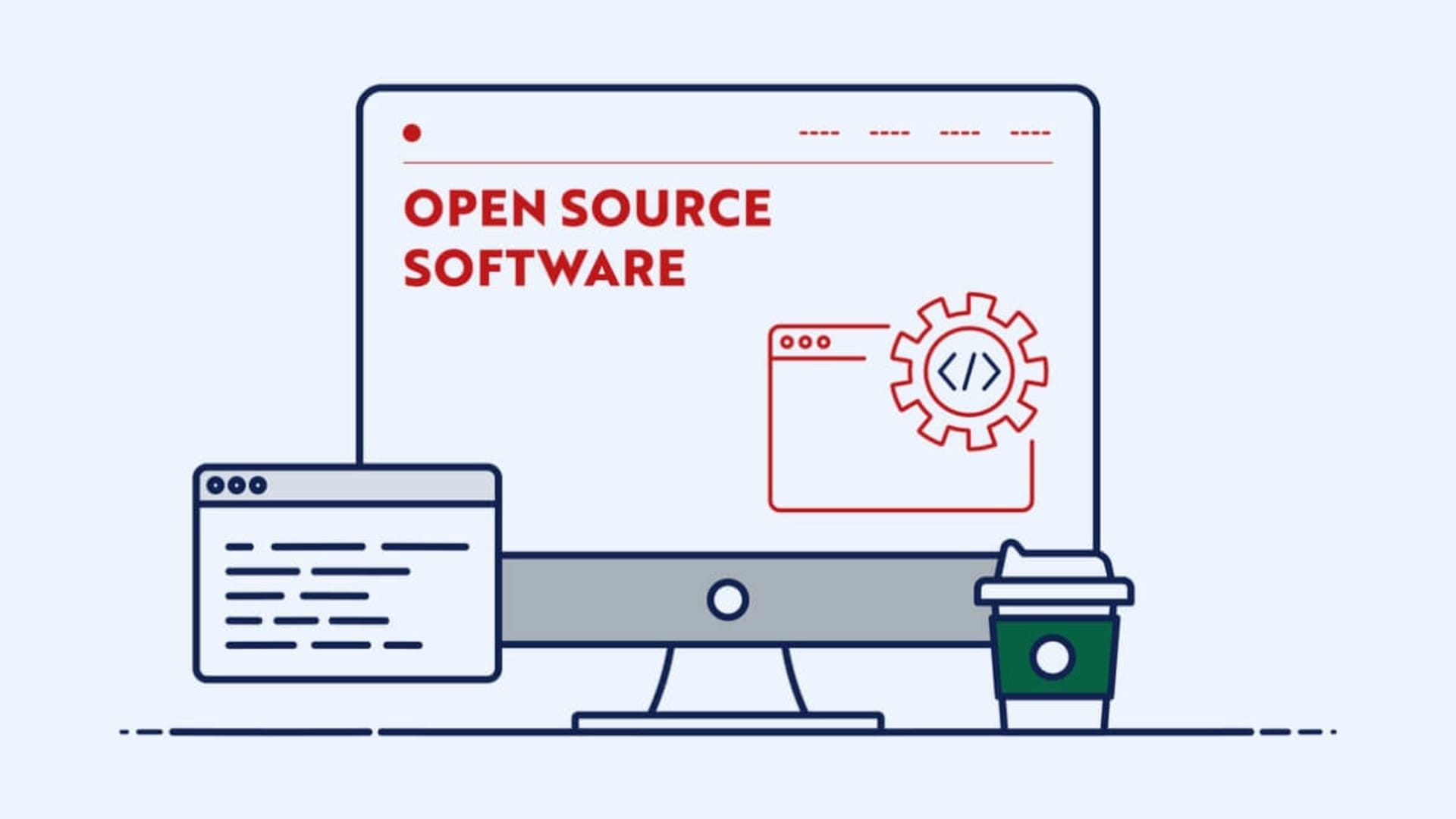Open-source software is a revolutionary concept that has changed the way we think about software development and distribution. Open-source software is developed and distributed collaboratively, allowing anyone to contribute to the development of the software. This allows for greater innovation and more cost-effective solutions for businesses.
Most open-source solutions are based on the copyleft philosophy, which states that all modifications and additions to open-source software must be released under the same license, ensuring that all users benefit from improvements made by any contributor. In recent years, many companies have begun recognizing open-source solutions’ potential.
Companies such as Microsoft, IBM, Google, and Apple have all implemented open-source solutions in their products and services. These companies have seen significant benefits from using open-source solutions, including increased innovation, improved security, and cost savings.
This article will discuss the concept of open-source software and its associated copyleft philosophy, and provide examples of successful companies that have implemented open-source solutions into their products and services. We will explore how these companies have benefited from open-source solutions and how your business can do the same.
A Brief History of Open-Source Software
The open-source movement began in the late 1980s and early 1990s as a response to the proprietary software model that had become dominant in the computing industry. The idea behind open-source was to create freely available software for anyone who wanted to use it, allowing users to modify and improve upon the code.
This was seen as a way of encouraging innovation and collaboration among developers, while also allowing users to customize their software for their own needs. The first major open-source project was the GNU Project, which Richard Stallman started in 1983. This project aimed to create a complete operating system that would be free for anyone to use and modify.
The project eventually led to the development of the Linux kernel, which became the foundation for many modern operating systems. In 1998, Eric Raymond wrote an essay called “The Cathedral and the Bazaar” which argued that open-source development could be more efficient than traditional closed-source development models. This essay helped popularize open-source development and spurred further growth in the movement.
In 1998, Bruce Perens created an organization called Open Source Initiative (OSI), which aimed to promote open-source software by creating standards for licenses and providing support for developers. This organization is still active today and is responsible for approving licenses such as GPLv2, GPLv3, Apache License 2.0, MIT License, etc., which are used by many popular open-source projects.
In 2000, IBM announced its commitment to open-source software with its “Linux Everywhere” initiative. This move helped further legitimize open-source development within corporate circles and encouraged other companies such as Microsoft and Oracle to embrace it as well.
In 2004, Google released Android under an Apache license, allowing anyone to modify or redistribute it freely without having to pay royalties or fees. This move helped spur further growth in mobile app development using open-source tools such as Java or HTML5/CSS3/JavaScript stack technologies like PhoneGap or Cordova.
Since then, there has been a steady growth in popularity of open-source projects, with more companies embracing them as part of their product offerings or even contributing back into them (such as Google with Android). In addition, there has been an increase in tools such as GitHub, which makes it easier than ever before for developers from all over the world to collaborate on projects.
As of 2020, there are countless successful open-source projects out there ranging from web browsers like Firefox or Chrome, operating systems like Linux, databases like MySQL, programming languages like Python, mobile apps like WhatsApp, and cloud-computing platforms like OpenStack, all of which have been made possible thanks to this movement’s success over the past few decades.
Sharing Is Caring: Understanding Copyleft
Copyleft is a type of licensing that allows users to freely distribute, modify, and use software. It was created as an alternative to traditional copyright laws, which restrict the use of copyrighted material. Copyleft licenses are designed to ensure that any modifications or improvements made to the original software remain free for everyone to use and share.
The most popular example products that are copyleft include Linux, Apache web server, MySQL database system, and WordPress content management system (CMS). These products have become widely used due to their open-source nature, which allows anyone with programming knowledge to contribute code or make changes without having to pay for a license. This has led to innovation in these areas as developers can collaborate on projects more easily than if they had been restricted by closed-source software.
Copyleft also helps with debugging and improving products because it encourages collaboration between developers who may not otherwise be able to communicate directly with each other. By allowing others access to the source code of a product, bugs can be identified quickly and fixed before they cause major problems for users.
Additionally, new features can be added more easily since there is no need for permission from the original software development company before making changes. This leads to faster development cycles which benefit both users and developers alike.
Finally, copyleft is often seen as a better solution than closed-source software because it provides greater transparency into how a product works, while still protecting its creators’ intellectual property rights through copyright law enforcement mechanisms, such as DMCA takedown notices or cease-and-desist letters, when necessary.
Additionally, since all modifications must remain free under copyleft licenses, this ensures that no one person or company will gain exclusive control over an entire market by locking out competitors through proprietary technology solutions like patents or trade secrets—something which could potentially stifle innovation in certain industries if left unchecked.
Overall, copyleft provides many benefits over traditional copyright laws, including increased collaboration between developers, leading toward faster development cycles; improved debugging capabilities; greater transparency into how products work; protection against monopolization of markets; and ultimately more freedom for users when it comes time to decide what kind of software they want run on their devices, without fear of legal repercussions from companies trying enforce restrictive licensing agreements upon them.
The Risk of Open-Source Software
Open-source solutions are becoming increasingly popular as businesses look for ways to reduce costs and increase efficiency. However, there are a number of risks associated with using open-source solutions that must be considered before making the decision to use them.
Security is one of the biggest concerns when it comes to open-source solutions. Since anyone can access the code used in an open-source solution, malicious actors may be able to find vulnerabilities or weaknesses that could be exploited.
Additionally, since many open-source projects rely on volunteers who may not have extensive experience with coding or security protocols, they may not always take proper precautions when developing their software, which could lead to further security issues down the line. To mitigate this risk, it is important for organizations using open-source solutions to ensure that they regularly update their software and perform regular vulnerability scans so any potential threats can be identified quickly and addressed appropriately.
Another risk associated with using open-source solutions is bugs or errors in the code itself, which can cause unexpected behavior from the software or even crash it entirely if left unchecked. While most developers strive for perfection when creating their codebase, there is no guarantee that all bugs will be caught before release. This means users must remain vigilant about checking for updates and patching any discovered flaws as soon as possible after they are found.
Additionally, since many open-source projects rely heavily on community contributions, it’s important for organizations utilizing such projects to make sure those contributors have adequate knowledge about coding best practices, so any potential problems can be avoided before they become major issues down the line.
Legal issues also arise when dealing with open-source solutions due to copyright laws surrounding certain pieces of code used within them. While most developers try their best not to infringe upon existing copyrights, there’s no guarantee that all instances will be caught prior to release.
This means organizations should always double-check licenses before deploying an application based on an existing project, just in case something was missed during development stages. Additionally, depending on where you live, certain encryption algorithms might require special permission from government agencies before being deployed publicly; failure to do so could result in hefty fines, or worse, depending on severity.
Backdoors are another concern related specifically to applications developed by third parties. While most reputable contributors would never intentionally include backdoors into their products, smaller and less established ones might attempt such tactics, either out of malice or ignorance. As such, it’s important for organizations looking into utilizing third-party applications built off existing projects to thoroughly vet said solution beforehand, just in case anything suspicious pops up during the research process.
Finally, lack of technical oversight is another issue worth mentioning here. Since many volunteer-driven projects don’t have dedicated teams managing them, certain aspects like performance optimization might get overlooked, leading to slowdowns over time if left unchecked. To combat this problem, it is recommended users keep track of changes made between versions, along with running periodic tests against different hardware configurations, just in case something slips through the cracks unnoticed.
Top 5 Open Software Solutions
Most people don’t realize just how much of their infrastructure is reliant on open-source. Below we are sharing just five of the most common implementations of open software. Massively popular as they are, we are barely scratching the surface of the open-source movement in the tech industry.
- Linux: Linux is an open-source operating system that is used by millions of people around the world. It is a free and powerful alternative to Windows and Mac OS X, and it can be used for various tasks such as web hosting, software development, gaming, and more. It is highly customizable and can be tailored to fit any user’s needs.
- Apache: Apache is an open-source web server that powers over half of all websites on the internet. It is highly reliable, secure, and efficient, making it one of the most popular web servers in use today. Apache also supports a wide range of programming languages and technologies such as PHP, Perl, Python, Ruby on Rails, Java EE, and more.
- MySQL: MySQL is an open-source relational database management system (RDBMS) that is used by many large companies to store their data. It is fast, reliable, secure, and easy to use. MySQL also supports many programming languages such as PHP, Perl, Python, Java EE, and more.
- WordPress: WordPress is an open-source content management system (CMS) that powers millions of websites around the world. It makes creating websites easy with its intuitive user interface and powerful features, such as themes and plugins. WordPress also supports a wide range of programming languages such as PHP, HTML5/CSS3/JavaScript/jQuery/AJAX/JSON/XML/etc., making it one of the most popular CMS solutions available today.
- Drupal: Drupal is an open-source content management system (CMS) that powers thousands of websites around the world. It has a robust set of features, including themes and modules, that make creating complex websites easy for developers or non-developers alike. Drupal also supports a wide range of programming languages such as PHP, HTML5/CSS3/JavaScript/jQuery/AJAX/JSON/XML/etc., making it one of the most popular CMS solutions available today.
The names on this list shouldn’t be a surprise to anyone. The open-source community is a massive movement that has led to some of the most significant industry standards. It’s the power of technocratic democracy at its best, with hundreds of collaborators sharing their insights and building a product that is more than the sum of its individual parts.
The commitment towards open-source solutions from massive companies like Google and Microsoft is a clear message about their belief in the model as well as their reliance on the open movement. It’s not an exaggeration to say that almost all the backbone of the internet is built on open-source software.
Implementing an Open-Source Solution in Your Business
While open-source solutions offer a wide range of benefits, including cost savings, flexibility, and security, implementing an open-source solution can be a daunting task for those unfamiliar with the process. This guide will provide an overview of how to implement an open-source software solution in your business, focusing on security.
The first step is to identify the specific needs of your business and determine which open-source software solution best meets those needs. There are many different open-source solutions available, so it’s important to do your research and find one that fits your particular requirements.
Once you’ve identified the right solution for your business, you’ll need to download and install it on your system. Remember to always download from official software like the project’s repository. Depending on the type of solution you choose, this may require additional hardware or software components such as databases or web servers. Once the software is installed, it’s time to configure it for use in your business environment.
This includes setting up user accounts and permissions, configuring access control lists (ACLs), and establishing authentication protocols, such as two-factor authentication or biometric identification. It’s also important to ensure that all data is encrypted when stored or transmitted over networks.
Additionally, you should consider implementing a patch management system to ensure that any security vulnerabilities are addressed quickly and efficiently. Once the software is configured and running properly, it’s time to start using it in your business operations. This includes training staff on how to use the new system and developing policies and procedures for its use within the organization.
It’s also important to monitor usage patterns and performance metrics so that any potential issues can be identified quickly and addressed appropriately. Finally, it’s essential to maintain ongoing security measures for your open-source software solution.
This includes regularly updating the software with patches and updates from the vendor as well as conducting regular vulnerability scans to identify any potential weaknesses in the system. Additionally, you should consider implementing intrusion detection systems (IDS) or intrusion prevention systems (IPS) to detect malicious activity on your network before it can cause damage or disruption.
You can successfully implement an open-source software solution in your business by following these steps. Doing so will help ensure that sensitive data remains secure while allowing you to take advantage of all the benefits offered by open-source solutions, such as cost savings, flexibility, scalability, and more.
In short, open-source solutions provide access to powerful tools and resources that can help businesses stay competitive in the ever-changing digital landscape. With the right open-source solution, businesses can take advantage of the latest technologies without breaking the bank. Open-source solutions are an invaluable asset for any business looking to stay ahead of the curve, and for those who wish to share their progress in kind to push toward a better and technologically-developed ecosystem.







